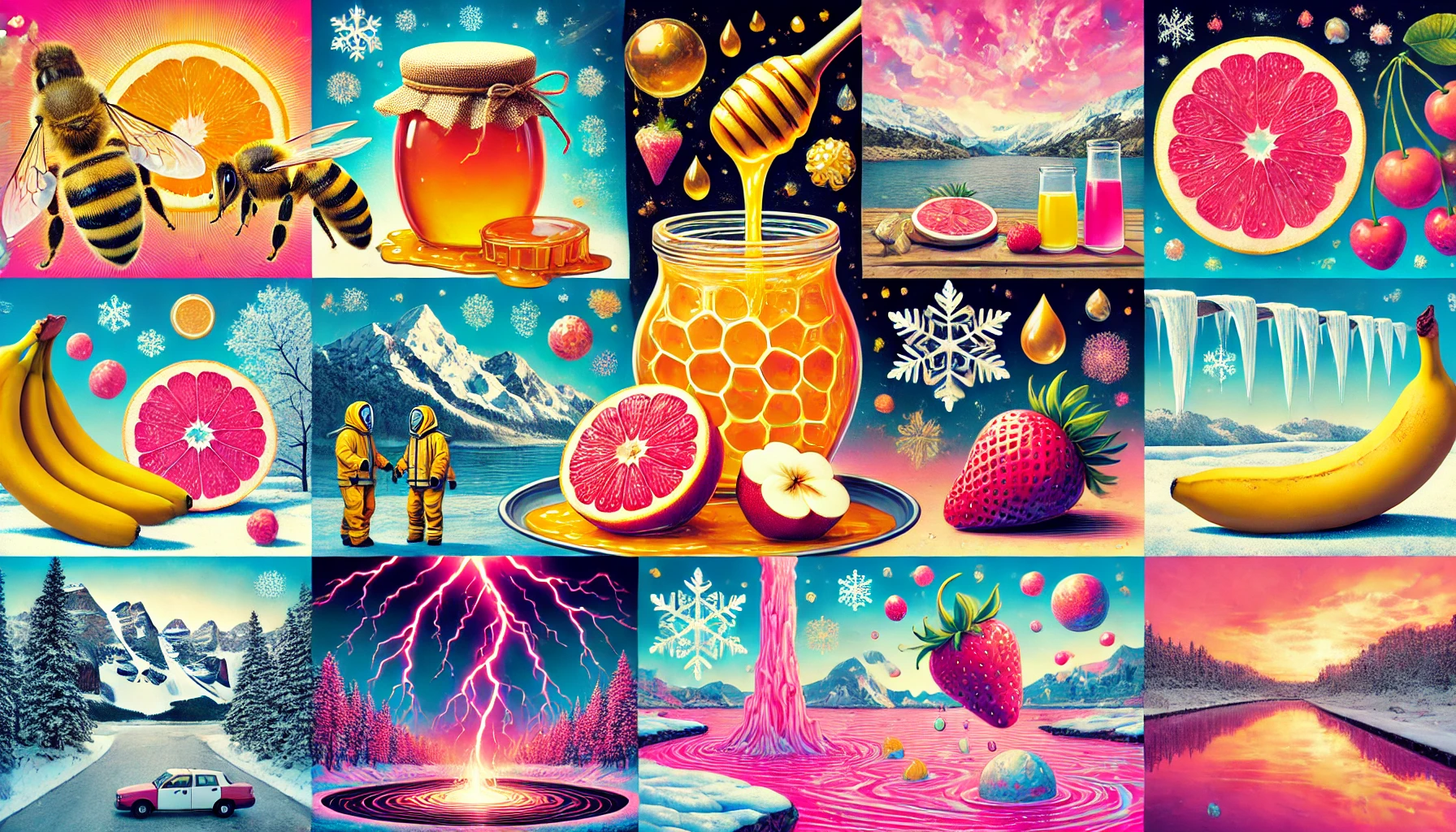In a world brimming with wonders, it’s the peculiar and unexpected that often capture our imaginations. From the foods we eat to the very fabric of our daily lives, from the chilling mysteries of winter to the awe-inspiring marvels of the world, there is no shortage of strange but true facts waiting to be uncovered. Join us as we delve into an assortment of bizarre yet factual tidbits that will leave you both entertained and enlightened.
Strange but True Facts About Food
- Honey Never Spoils: Archaeologists have found pots of honey in ancient Egyptian tombs that are over 3,000 years old and still perfectly edible.
- Bananas Are Berries, but Strawberries Aren’t: Botanically speaking, bananas are classified as berries, while strawberries are not.
- Apples, Onions, and Potatoes Have the Same Taste: When you pinch your nose and eat an apple, onion, or potato, they all taste sweet due to the absence of smell altering our perception of taste.
- Peppers Get Hotter Over Time: As they age, chili peppers increase in heat because of the growing concentration of capsaicin.
- Pineapple Eats You Back: Pineapple contains an enzyme called bromelain that breaks down proteins, so when you eat it, it’s also trying to digest you.
Strange but True Facts About Life
- We Are Stardust: Almost every element in our bodies was formed in the core of a star. We are essentially made of star material.
- Humans Glow in the Dark: Our bodies emit a tiny amount of light that is too weak for our eyes to detect.
- You Can’t Hum While Holding Your Nose: When you try to hum while holding your nose closed, it becomes impossible because the air cannot escape.
- Your Stomach Lining Replaces Itself Every Few Days: This prevents it from digesting itself because of the strong acids it produces.
- Humans Share 50% of Their DNA with Bananas: Despite the obvious differences, we share a surprising amount of genetic material with bananas.
Weird but True Winter Facts
- Snow Can Be Pink: In certain conditions, algae that contain a red pigment can grow on snow, turning it pink. This is often called “watermelon snow”.
- It Can Be Too Cold to Snow: When temperatures drop very low, the air loses its capacity to hold moisture, making snowfall less likely.
- Snowflakes Aren’t Always Unique: While the myth persists that no two snowflakes are alike, identical snowflakes have been found in controlled laboratory conditions.
- Ice Bubbles in Frozen Lakes: Methane gas from decaying organic matter can form bubbles that get trapped in layers of lake ice, creating stunning natural phenomena.
- Winter Vomiting Bug: Norovirus, often called the winter vomiting bug, is more prevalent in colder months, leading to an increase in cases of this stomach bug.
Strange but True Facts About the World
- The Earth Is Not a Perfect Sphere: Our planet is slightly pear-shaped due to the equatorial bulge caused by its rotation.
- Mount Everest Grows: Due to the movement of tectonic plates, Mount Everest increases in height by approximately 4 millimeters each year.
- Rivers Can Boil: The Shanay-Timpishka, also known as La Bomba, in the Amazon, is a river so hot that it boils. Its waters reach temperatures close to 200°F (93°C).
- A Lake with No Water: Lake Hillier in Australia is a bright pink lake. The water retains its pink color even when removed from the lake due to the presence of algae and bacteria.
- A Perpetual Lightning Storm: In Venezuela, there is a region called Catatumbo where lightning storms occur almost every night for ten hours, creating up to 280 strikes per hour.
Checkout the collection of weird history facts
Conclusion
Exploring the strange but true facts about our world offers a fascinating glimpse into the wonders that surround us. From the microscopic intricacies of our DNA to the grand phenomena of our planet, these oddities remind us of the complexity and beauty of life. Whether it’s the foods we consume, the quirks of human existence, the peculiarities of winter, or the astounding features of the world, each fact enriches our understanding and appreciation of the extraordinary nature of the ordinary. So, keep an open mind and a curious spirit, for there is always something new and amazing to discover in this ever-surprising world of ours.
References
Australian Geographic. [A Lake with No Water](https://www.australiangeographic.com.au/topics/science-environment
National Geographic. Honey Never Spoils.
Scientific American. Bananas Are Berries, but Strawberries Aren’t.
Mental Floss. Apples, Onions, and Potatoes Have the Same Taste.
The Guardian. Peppers Get Hotter Over Time.
Healthline. Pineapple Eats You Back.
BBC. We Are Stardust.
Live Science. Humans Glow in the Dark.
HuffPost. You Can’t Hum While Holding Your Nose.
Scientific American. Your Stomach Lining Replaces Itself Every Few Days.
Genome Research. Humans Share 50% of Their DNA with Bananas.
National Snow & Ice Data Center. Snow Can Be Pink.
Weather.com. It Can Be Too Cold to Snow.
NOAA. Snowflakes Aren’t Always Unique.
Smithsonian Magazine. Ice Bubbles in Frozen Lakes.
Centers for Disease Control and Prevention (CDC). Winter Vomiting Bug.
NASA. The Earth Is Not a Perfect Sphere.
National Geographic. Mount Everest Grows.
National Geographic. Rivers Can Boil.

